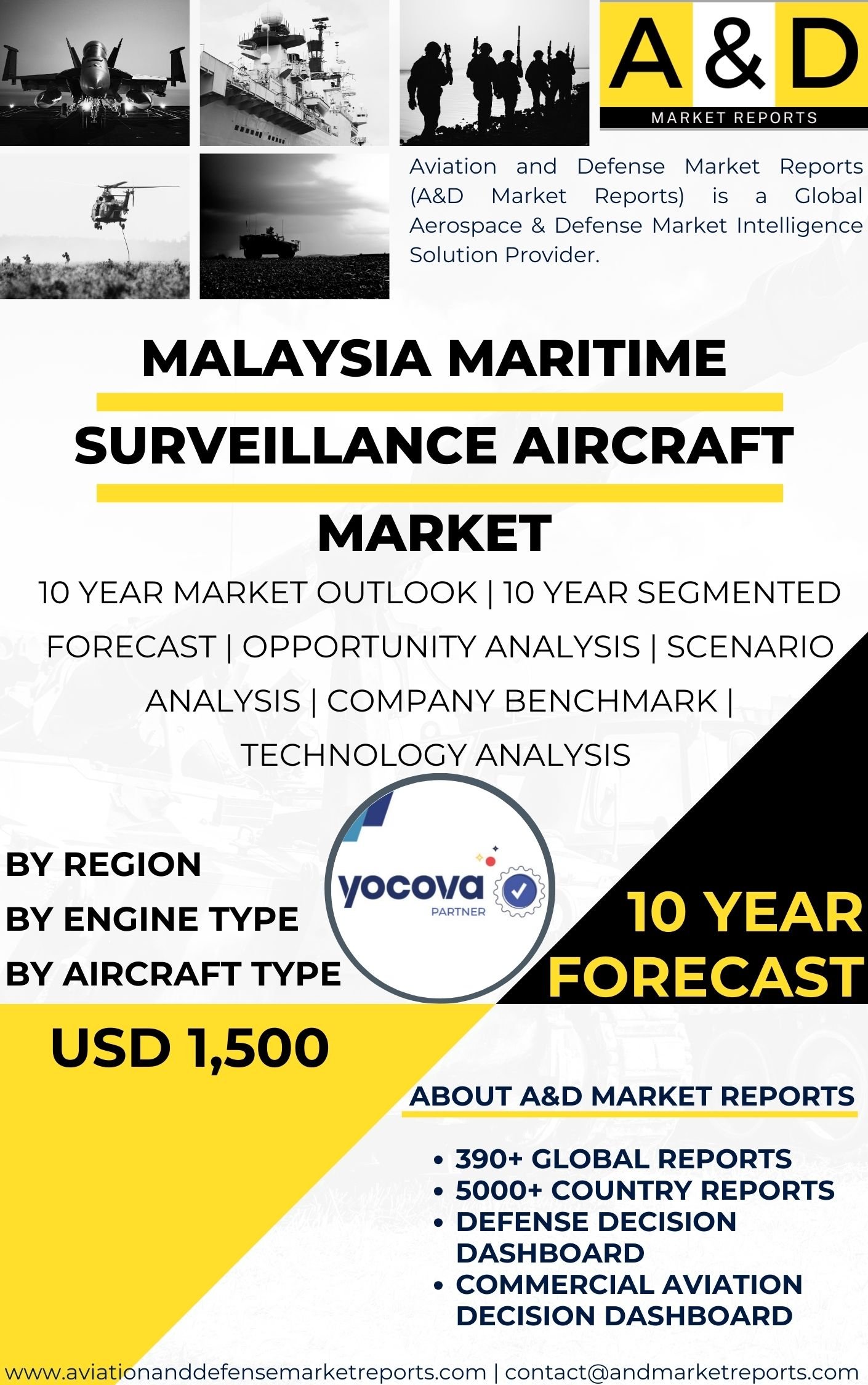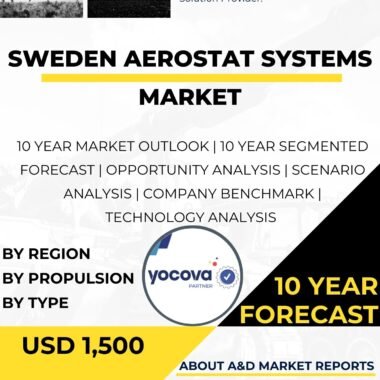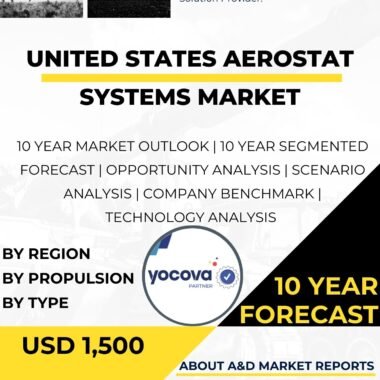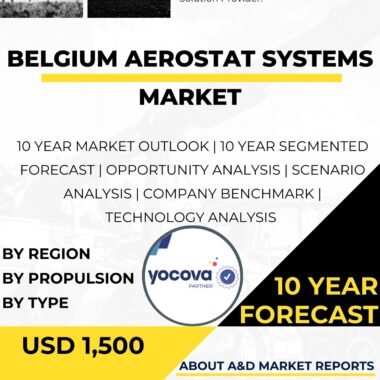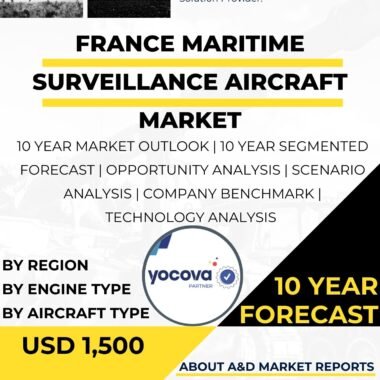Description
The Maritime Surveillance Aircraft market in Malaysia has witnessed significant growth and development in recent years, reflecting the country’s commitment to enhancing its maritime security and safeguarding its territorial waters. Maritime Surveillance Aircraft (MSA) play a critical role in monitoring and patrolling maritime regions, enabling effective surveillance, reconnaissance, and response to various maritime threats and challenges.
One of the primary drivers of the Maritime Surveillance Aircraft market in Malaysia is the government’s recognition of the strategic importance of maritime security. As a maritime nation with an extensive coastline and vast territorial waters, Malaysia faces diverse maritime challenges, including piracy, illegal fishing, smuggling, and territorial disputes. The integration of advanced Maritime Surveillance Aircraft into its defense strategy allows Malaysia to maintain a credible and vigilant presence in its maritime domain.
The adoption of Maritime Surveillance Aircraft offers several significant advantages. These aircraft provide extended range and endurance, enabling them to conduct long-duration missions over vast maritime areas. Equipped with state-of-the-art sensors, MSA can detect and track surface vessels, submarines, and other maritime threats, facilitating early warning and situational awareness.
Moreover, Maritime Surveillance Aircraft are essential for maritime search and rescue operations, supporting efforts to locate and assist vessels or individuals in distress at sea. The ability to cover large maritime areas efficiently enhances the effectiveness of search and rescue missions.
Additionally, MSA contribute to maritime law enforcement by monitoring and detecting illegal activities, such as drug trafficking, human smuggling, and illegal fishing. The surveillance capabilities of MSA enable authorities to identify and respond to illicit activities, ensuring the protection of marine resources and maritime security.
The Malaysian government has recognized the importance of international collaborations in acquiring and developing Maritime Surveillance Aircraft technologies. Partnerships with leading global aerospace companies and technology providers have facilitated access to cutting-edge MSA systems and expertise. These collaborations have enabled technology transfer and capacity building, contributing to the growth of Malaysia’s domestic Maritime Surveillance Aircraft capabilities.
Furthermore, Malaysia has been actively investing in local research and development (R&D) initiatives to foster indigenous MSA technologies. By encouraging homegrown innovation, Malaysia aims to achieve self-reliance in MSA development and strengthen its aerospace industry.
While the Maritime Surveillance Aircraft market in Malaysia shows promise, it is not without challenges. One of the primary hurdles is the high cost of developing and acquiring advanced MSA systems. These sophisticated aircraft require significant investment in research, development, and testing. Budget constraints may impact the pace and scale of MSA acquisition and development efforts.
Moreover, MSA must meet stringent safety and performance standards. As these aircraft operate in challenging maritime environments, ensuring their reliability and resilience is critical to maintaining operational readiness.
Additionally, MSA technologies must continuously evolve to keep pace with emerging maritime threats and advancements in surveillance and detection systems. The maritime domain is dynamic, and MSA must adapt to new challenges and requirements.
Looking ahead, the Maritime Surveillance Aircraft market in Malaysia is poised for further growth. The government’s commitment to enhancing its maritime security and defense capabilities will drive continued investments in MSA systems. As MSA continue to evolve and demonstrate their effectiveness, they are likely to play an increasingly pivotal role in Malaysia’s maritime security strategy.
Moreover, Malaysia’s participation in regional security collaborations and joint maritime exercises will likely influence its MSA requirements. As the country seeks to strengthen its position as a key player in regional maritime security and defense cooperation, the demand for advanced MSA systems with interoperability and compatibility with allied forces will increase.
In conclusion, the Maritime Surveillance Aircraft market in Malaysia has experienced significant growth and progress. The government’s focus on enhancing its maritime security capabilities and investing in advanced technologies has paved the way for the integration of Maritime Surveillance Aircraft into its defense strategy. International collaborations and domestic research efforts have positioned Malaysia as a participant in the global MSA landscape.
However, challenges related to budget constraints, technology development, safety standards, and evolving maritime threats must be addressed proactively to sustain and enhance the growth of the Maritime Surveillance Aircraft market in the years to come. By leveraging MSA technologies effectively, Malaysia can effectively enhance its maritime security, improve situational awareness, and safeguard its territorial waters.
